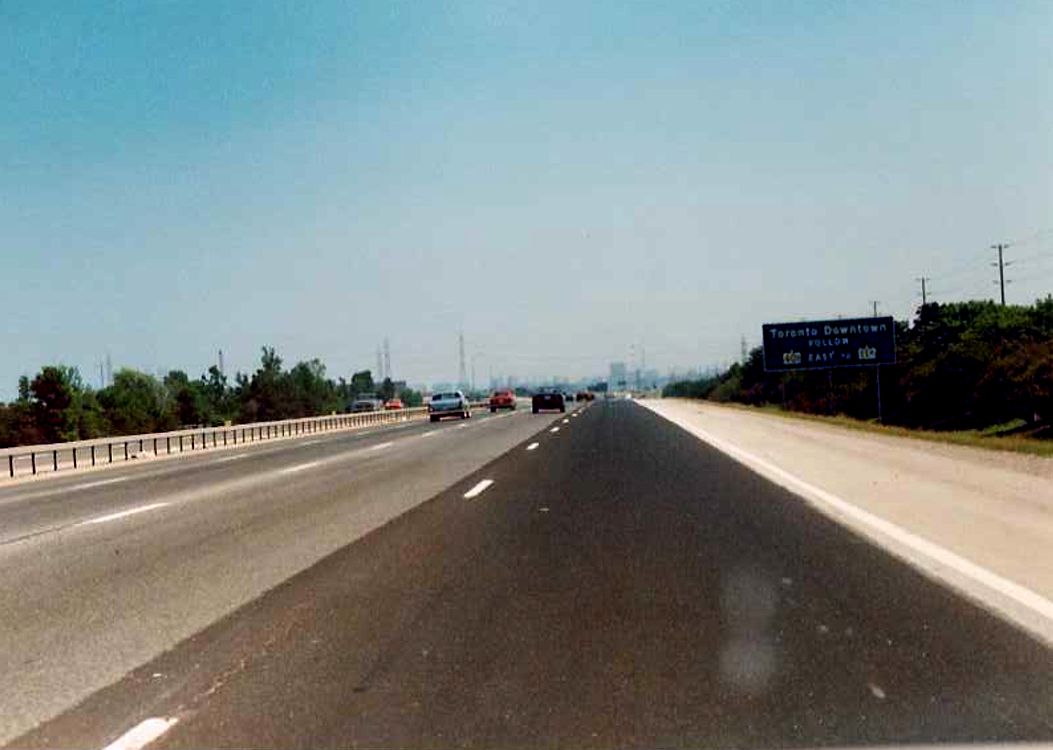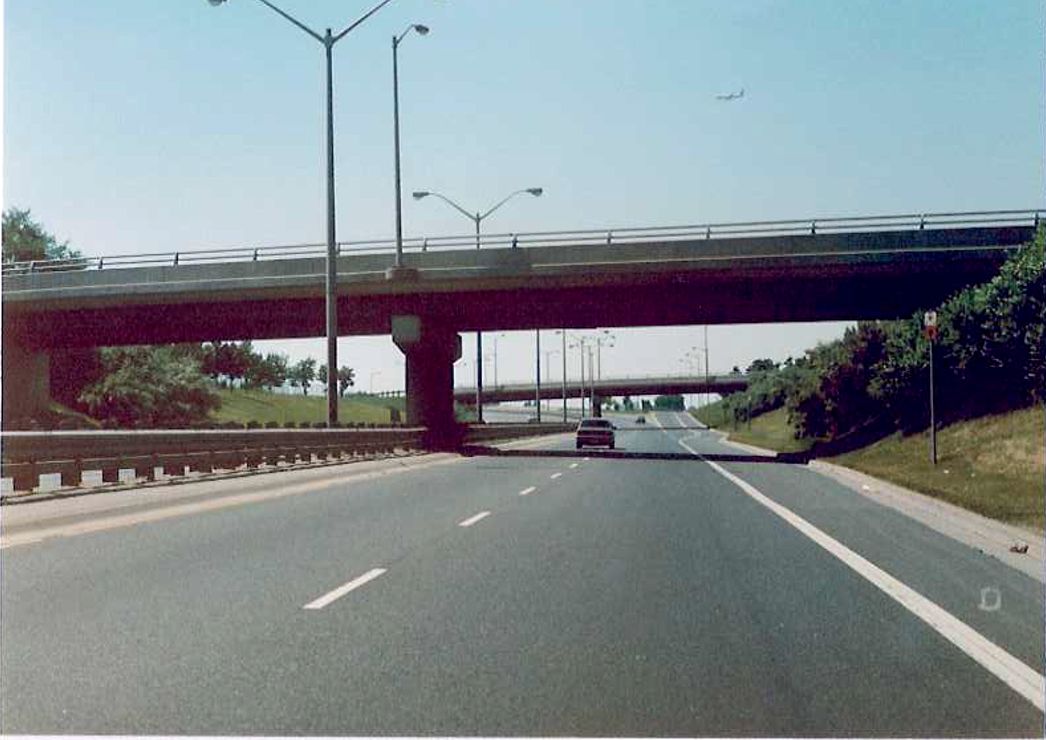| Looking south along the southbound lanes of Highway 400 just south of the Steeles Avenue interchange. The sign on the right, which indicates which routes to utilize to access downtown Toronto, exists today in bilingual form. However, unlike today, in 1989 Highway 11A was referenced (logically so) as the direct route to access downtown Toronto. Interestingly, any mention of Highway 11A was expunged from this sign well before the downloading of 1997 and 1998. My guess is that it was removed when the sign was changed to the bilingual standard. |
 |

